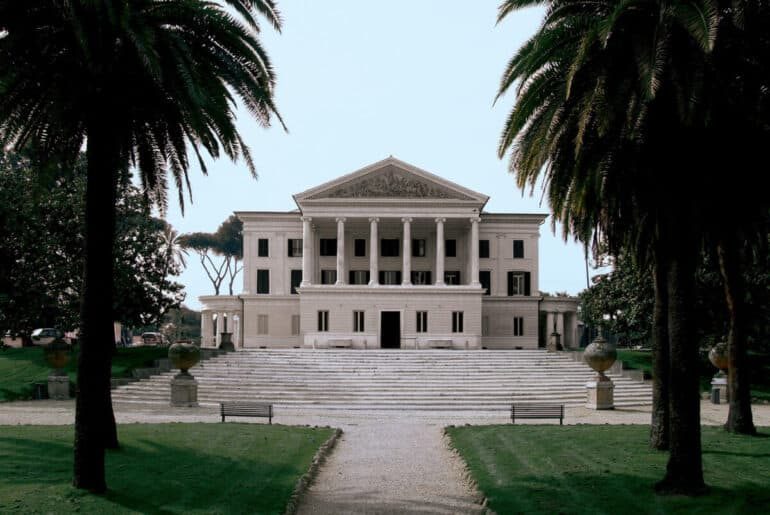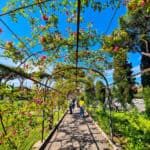Visit the park and the museums of Villa Torlonia
In a city like Rome, where 1.469,17 hectares are part of UNESCO’s World Heritage, some historical sites are bound to slip the blessing of mainstream popularity. One of these hidden gems is the multi-faceted Villa Torlonia.
Semi-hidden by large grounds with entrances on Via Nomentana, Villa Torlonia is a park with a highly heterogeneous complex of buildings that have been converted into a museum. To any visitor’s eye, the juxtaposition of its many styles rightfully resembles a wonderful pastiche.
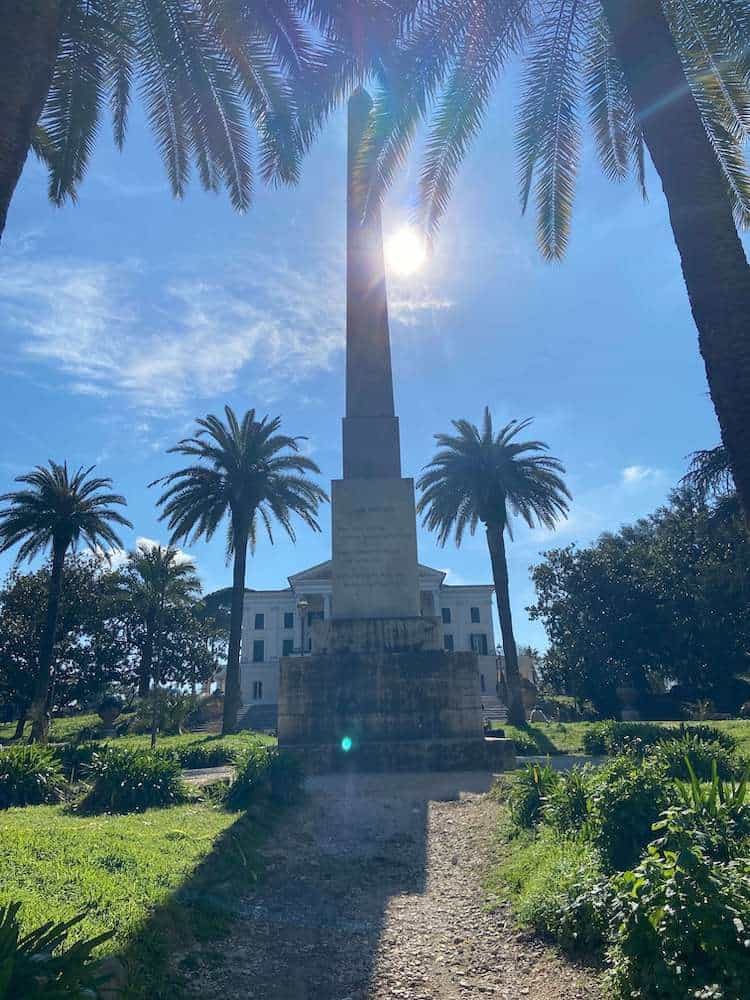
Historically, the grounds were one of the “rural” properties of the princely Pamphilj family until the mid 1700s, when it was bought by the Colonnas, one of the oldest patrician families of the Eternal City. In 1797 they in turn sold it to up-and-coming banker Giovanni Raimondo Torlonia. Son of a wealthy textile merchant, Giovanni Torlonia had cleverly made his fortune during the French invasion by speculating on the Napoleonic troops and the Roman nobles. He flaunted his fortune and dressed the part by purchasing villas and palazzos and doing charitable works in the City, so much so that he was given the coveted title of Prince by Pope Pius VII. In 1806, he commissioned the renowned architect Giuseppe Valadier (who had designed Piazza del Popolo) to build the first structure of what we now know as Villa Torlonia.
Casino Nobile
The first building you should visit is Casino Nobile. Grandiose and majestic in its neoclassicism, the front of the “house” greets you with imposing Ionic columns that are preceded and semi-covered by an obelisk on your way through the grounds. Despite the diminutive in the name, the main surface of the Casino is spread on four stories. The ground floor is built around the tiny yet princely ballroom. Exquisite in its miniature size, the ballroom is flanked by a portico and circumscribed internally by Corinthian columns. Be sure to admire the crystal chandeliers hanging from the ceiling, a work of art in itself with its heavenly stuccoes and frescoes.
Vying for the spot of protagonist of this floor to our eyes is the blessedly small red-walled chamber that used to be a bath room. The perimeter is deliciously decorated with mythological designs and frescoes, and the ceiling sports two angels holding the crest of the Torlonia family.

Even the “bare” corridors and antechambers are decorated with beautiful ceilings and marble copies of Greek and Roman statues, some by Antonio Canova. Don’t miss the spectacular trompe d’oeil on the walls of the Chamber of the Italian Poets (with its cast iron statue of Diana) and in the Gothic Room (with paintings from Torquato Tasso’s Jerusalem Delivered).
Two more rooms that deserve a mention are the eccentric Egyptian room, with its floor covered in golden hieroglyphs and mosaics and the various paintings of Cleopatra and Antony, and the Bacchus Room, with frescoes depicting the three continents (Africa, Asia, Europe), the four seasons, and various mythological tales.
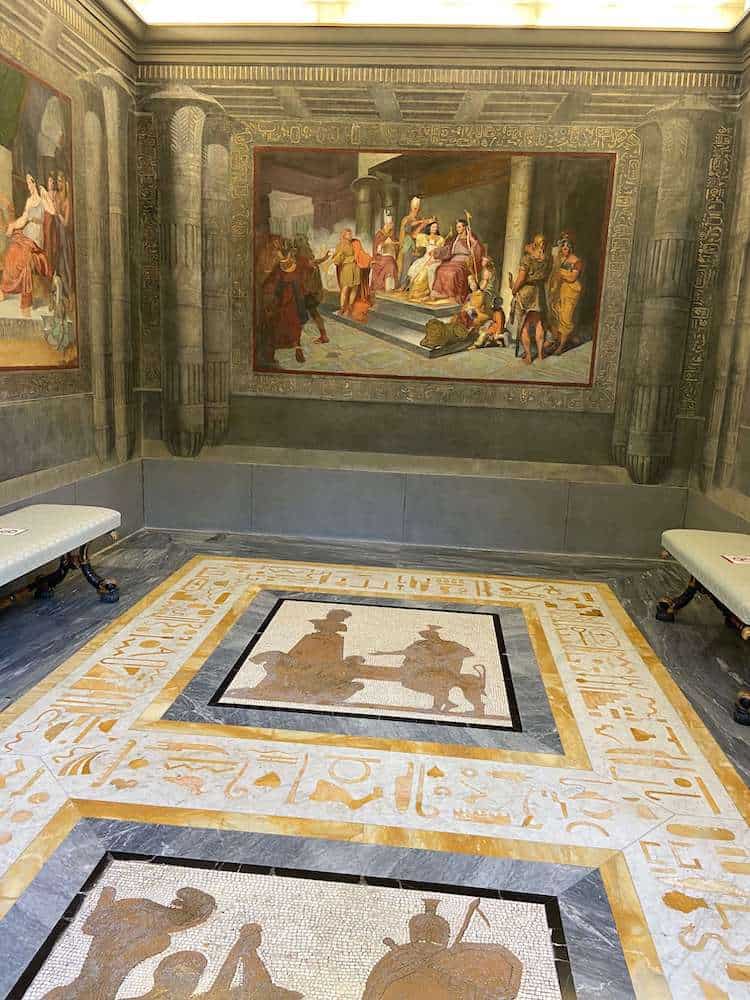
Casino dei Principi
Next, you should visit Casino dei Principi, a smaller annex that Prince Alessandro Torlonia, Giovanni’s son and heir, was fond of for his lavish parties in the 1800s. From the balcony of this Casino, his guests could enjoy the performances held in the original amphitheater that stood below. Today, the building houses the Archives of the Roman School, with over 10,000 artworks, documents, catalogues, books, and now also hosts temporary exhibits. The main room of the Casino Nobile’s ground floor is decorated by a mosaic floor and walls depicting various vedutistic paintings of the Bay of Naples, another trompe l’oeil device, making the viewer feel as if they were by the sea.
Casina delle Civette
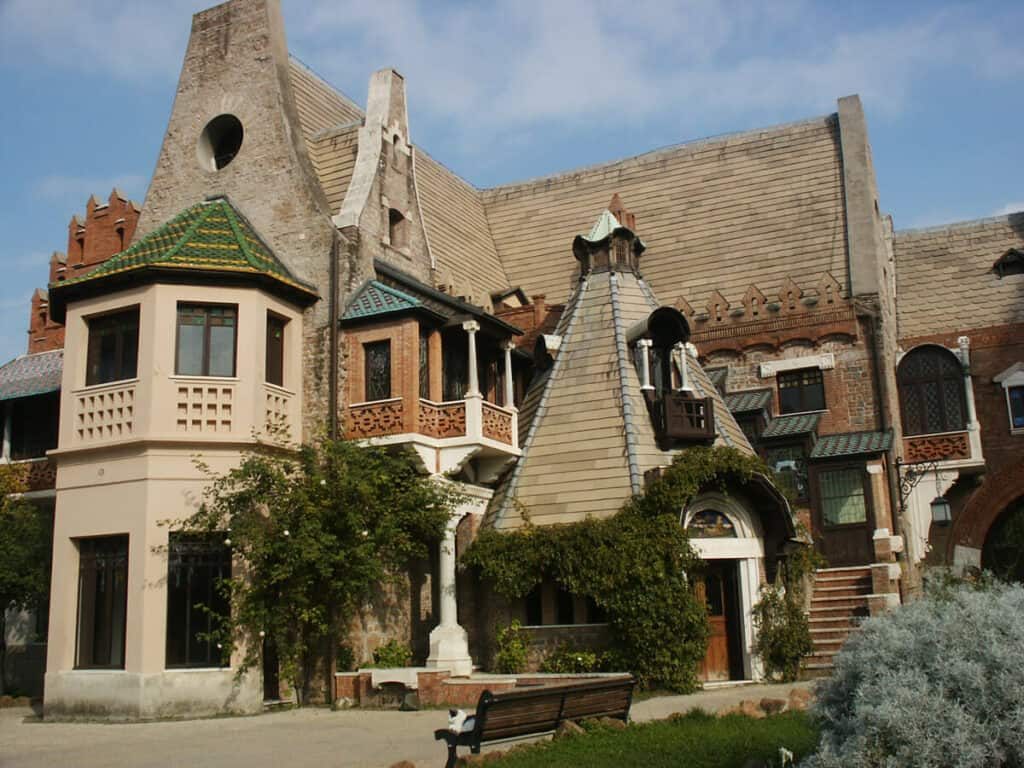
Taking some time to enjoy the gardens as you walk through them, immerse yourself in nature to cleanse the remains of the ostentatious Baroque before entering the Swiss cottage Casina delle Civette. Tonally different, in this case, is an understatement. If marble and gold were predominant in Casino Nobile, here you are surrounded by dark wood and colored glass. The building is aptly named “House of the Owls” because owls are depicted almost obsessively on many different surfaces in the building.
You’re entering a whole new world, a completely different realm and era. It almost feels like being transported in a magical house in the woods, untouched by man, where a woodland creature, a nymph or an elf could walk in at any moment, a pixie or a fairy could fly in the stained windows depicting scenes of nature and animals, but never humans.
The style of the exterior truly makes you feel like walking into a German fairytale, whereas the ground floor hall has the vibe of a faux Medieval castle, a place for knights and princesses and courtly love.
The miniature-sized rooms in the upper floor and the annex instead are decorated in Liberty style, with colourful glass panels mosaics, stucco work, inlaid wood as well as scarce Medieval-looking iron and wood furniture.
Mussolini’s Bunker
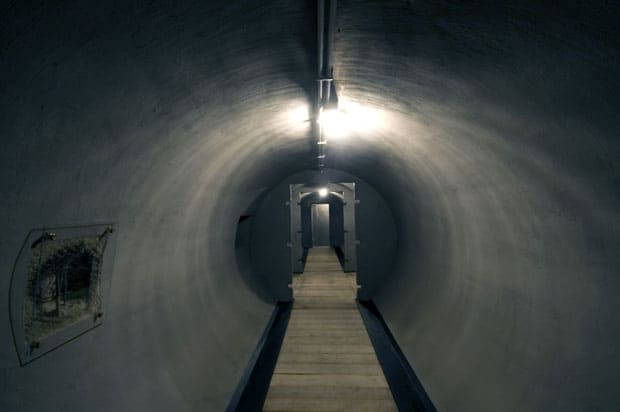
The grounds of Villa Torlonia have much more to offer: other smaller villas, a theatre, a greenhouse, two temples, various statues, obelisks, honorary columns, a fountain, a vast variety of plants, a lake as well as a modern cafe. But what is probably of biggest historical impact is the underground bunker.
From the 1920s, Villa Torlonia housed an unlikely tenant: Benito Mussolini, who was only paying the symbolic sum of one lire per year for rent. He and the Torlonia heir, Giovanni Jr, built an underground bunker with thick walls in order to protect themselves from hypothetical aerial attacks. Mussolini’s bunker was built over the ancient catacombs and, ironically, a Jewish cemetery dating back to the third/fourth centuries AD.
Today, Villa Torlonia is a public park and most of its buildings have been converted to a museum. If you are in the mood for a multi-faceted artistic experience of wide-ranging tradition and a walk in a magical park, this is the place you want to visit.
INSPIRATION
Best Parks In Rome
Address
Via Nomentana 70 (The ticket office is at Casino Nobile)
Opening hours
Tuesday-Sunday: 9:00am- 7:00pm
Last admission 1 hour before closing time
Tickets
Casina delle Civette + Casino Nobile with exhibitions: € 11,00 (adults) – € 8,00 (concessions)
For the residents of Rome Capital and the metropolitan area (showing a valid document certifying their residence) € 8,00 (adults) – € 7,00 (concessions).
Info and booking
museivillatorlonia.it


